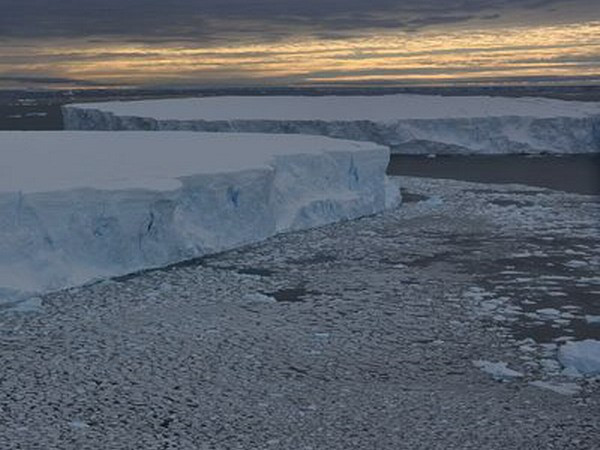Antarctic ice may have begun to melt due to El Nino from the 1940s
A new study has found that the Pine Island glacier, a huge frozen river that stretches across the edge of the Antarctic continent, begins to move out of an underground passage that controls the flow of this river and into the sea, after a melting process that occurred from the 1940s.
According to The Wall Street Journal, scientists have been interested in studying the change of glaciers because their state is vital in predicting sea level rise - a very problem. Be interested in coastal cities like Miami, New Orleans and Singapore island nation.
Retaining points, such as underground tunnels, provide natural brakes for the flow of ice from the center of the continent to the fringe. When this exposure decreases, the ice can drift out to sea much faster. In the sea, it is likely that ice will melt and contribute to sea level rise.

Ice melts due to El Nino phenomenon.(Source: wsj.com).
In order to provide a timeline for the Pine Island glaciers , scientists set up camps on ice, drilled holes through glaciers and collected sediment samples from three different points on the seabed.
They then analyzed the mineral composition of the samples, the presence or absence of microorganisms, and the size of the sediment particles.
All three cores have two distinct parts, characteristic of the transition from a conjoined ice sheet to a free iceberg. These parts are like vertical wooden circles, allowing scientists to study changes in natural conditions.
For example, the transition from the lack of microorganisms and small sediment particles to large numbers of microorganisms in the ice column indicates that the underground trench has lost contact with the ice sheet, according to new research published in the journal san Nature.
"It's a completely different environment. It's pretty obvious , " said Martin Truffer, a physicist at Alaska University, Fairbanks, and one of the authors of the study.
From their analysis, scientists have concluded that the Pine Island glacier must have started to split around 1970, after the formation of a warm water bag on the outer edge around 2 year.
Based on mathematical models, they determined that the cause could be due to the ocean warming up after an El Ni no phenomenon. However, scientists believe that more research is needed to confirm this.

The Pine River is a part of Antarctica that is suffering the most impact of ice loss.
Previously, scientists still relied heavily on satellite data to study ice. But these measurements have only existed since the 1990s, giving a narrow view of the problem. Meanwhile, sediment patterns "are like time machines" , helping us to have more insight into the past.
The Pine Island River, part of Antarctica, is suffering the most from the loss of ice, according to polar scientists.
Last year, the team of Dr. Khazendar discovered that tapes from other ice sheets on the east coast of the continent were melting more and exceeding the regeneration rate.
Scientists say it is likely that the Pine Island glacier will continue to shrink, thin and drift away.
- Antarctic ice will melt quickly in the next decades
- What will be the fate of the emperor penguin?
- Antarctica: Ice is breaking down from below
- El Nino 2015 looks strange with the peak of 1997
- Ice area increased record in Antarctica
- El Nino changes may cause many storms to land
- Nature is angry, El Nino will be more intense
- Can 2015 El Nino cause more natural disasters?
- The origin of the term El nino
- El Nino can last until May 2010
- El Nino is coming back
- Antarctic fish stocks are showing signs of decline
 Is the magnetic North Pole shift dangerous to humanity?
Is the magnetic North Pole shift dangerous to humanity? Washington legalizes the recycling of human bodies into fertilizer
Washington legalizes the recycling of human bodies into fertilizer Lightning stone - the mysterious guest
Lightning stone - the mysterious guest Stunned by the mysterious sunset, strange appearance
Stunned by the mysterious sunset, strange appearance